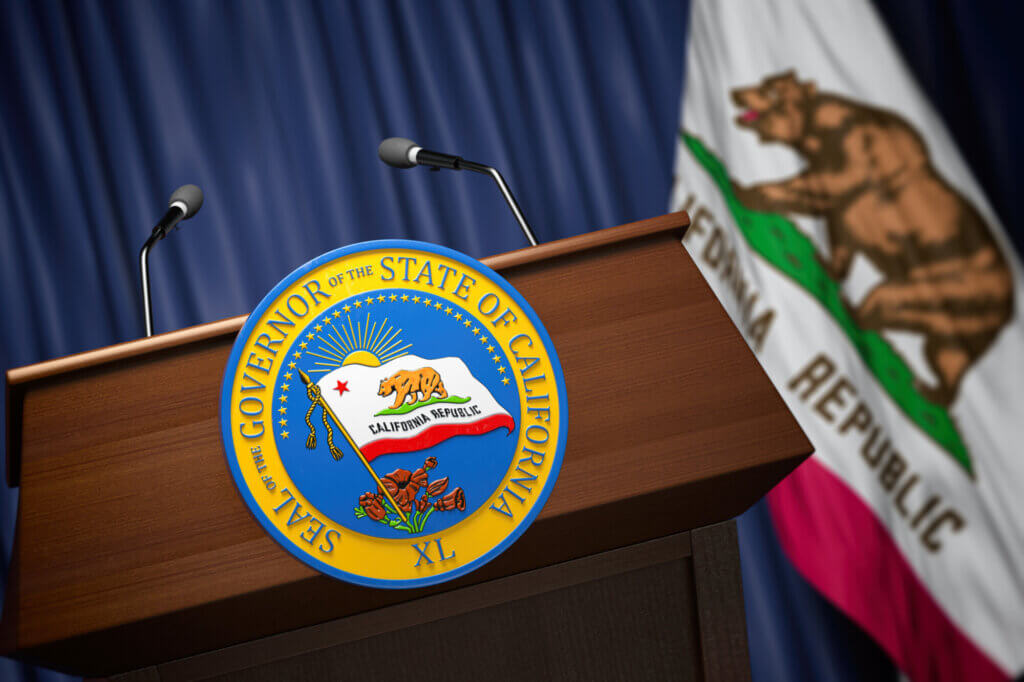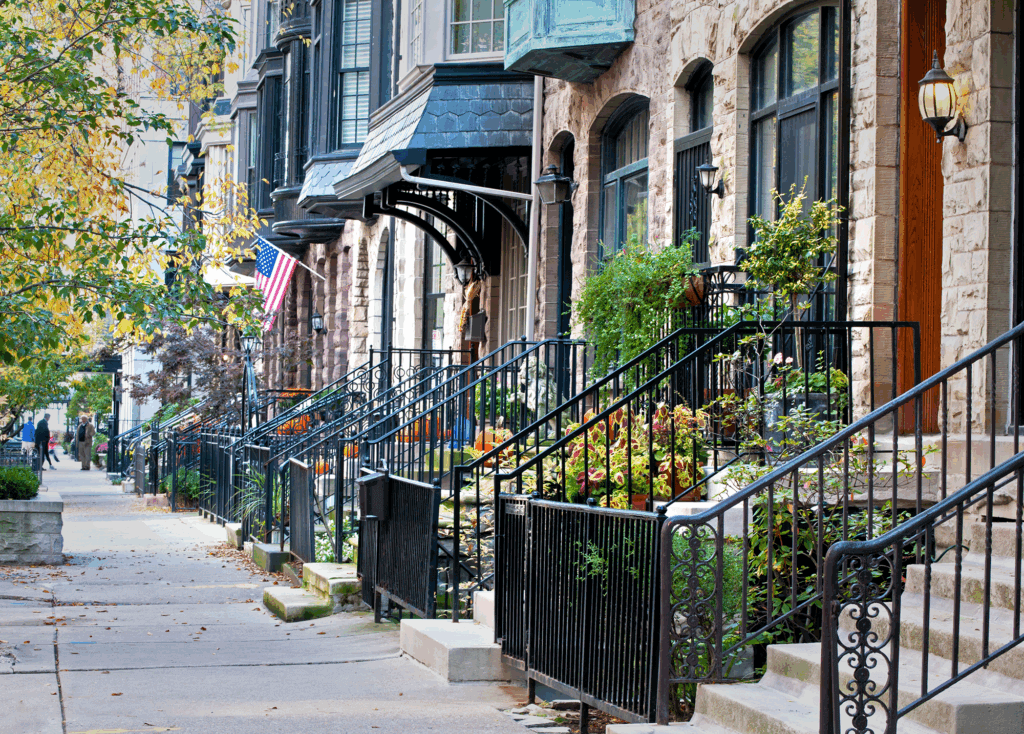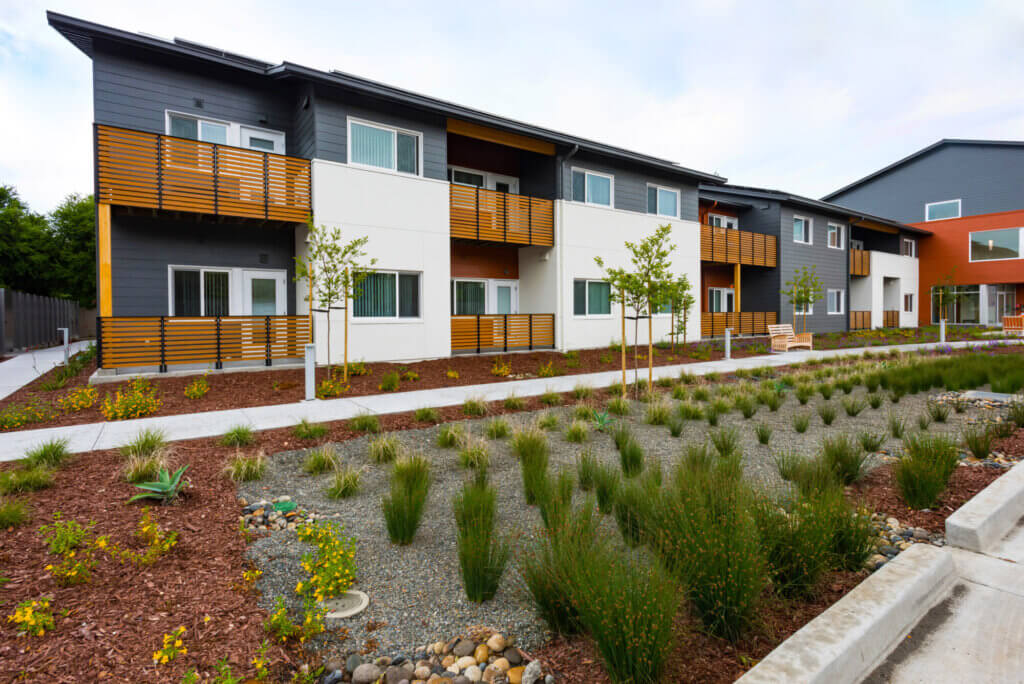Rebuilding after the Los Angeles Fires: What California Can Do to Facilitate Recovery
Published On February 13, 2025
As people in the Los Angeles region undertake the task of rebuilding, the complexity of the effort is heightened by factors that include an existing housing and homelessness crisis pre-disaster; significant local government fragmentation; and pressures to rebuild both as quickly as possible and more deliberately in order to mitigate, rather than magnify, existing challenges and inequities. Drawing on lessons from past rebuilding efforts, Terner Center researchers recommend steps that the State of California can take to help coordinate and assist the rebuilding effort.
Author: Sarah Karlinsky
Co-authors: Ben Metcalf, Carolina Reid, Tyler Pullen, Christina Economy, Ryan Finnigan, Julie Aguilar, and Muhammad Alameldin
As the Los Angeles region begins the enormous task of rebuilding after historic fires, the effort will be complicated by numerous factors. As others have written about in great detail, the post-disaster period is incredibly difficult, and often magnifies existing challenges and inequities.[1] Moreover, there is substantial pressure to rebuild as fast as possible, and the tension between rebuilding quickly and rebuilding more deliberately is heightened.
Los Angeles experienced a significant housing crisis pre-disaster. In their recent report, Housing Underproduction in the US, [2] Up for Growth estimated the cumulative housing underproduction for the LA-Long Beach-Anaheim metro area to be 339,000 homes as of 2022. More than half of all renter households (57.6 percent)—or 1,036,220 renter households—in LA County are cost burdened, meaning they pay 30 percent or more of their income in rent.[3] As a result, many people live in overcrowded or unsafe conditions.[4] The reduction of overall housing supply due to recent fires is likely to worsen housing affordability, increase overcrowding, and contribute to homelessness and housing instability.
While there are many actions that local governments can take to address these challenges, this blog focuses on actions that the State of California might take to help coordinate and assist the rebuilding effort.
1. The State should convene local governments to determine how to rebuild in a coordinated manner.
One of the core challenges of rebuilding is developing governance models to facilitate effective rebuilding plans and processes. The Los Angeles area is particularly vexed by local government fragmentation—there are 88 cities within Los Angeles County. Cities impacted by fires include the City of Los Angeles, Pasadena, Sierra Madre, and Malibu. Portions of unincorporated Los Angeles County, such as Altadena and Castaic, are also deeply impacted.
Local governments will need to work together across jurisdictional lines to develop a rebuilding plan, particularly for any public infrastructure and homes in high fire-risk areas. Risks such as environmental toxins unleashed by the fires also cross city borders, requiring coordination to minimize impacts on human health. Local governments would also benefit from approaching the rebuilding of private property in a coordinated manner and from sharing learnings across jurisdictions. Utility providers—such as electric, gas, and water—also work across local jurisdictional boundaries and may themselves be undertaking their own rebuilding efforts for the damaged utilities that they manage.
Moreover, local governments should be sharing data on impacted neighborhoods—including who lived there, who lost homes, what were the ages, incomes, ownership tenure and history, likely available resources of the residents. This information is essential to informing rebuilding efforts. In addition to inter-jurisdictional collaboration, local governments will need to coordinate rebuilding efforts across their own departments, including planning, building, and public works, among others. After the Complex Fires in 2017, Sonoma County developed coordinated and effective processes to support rebuilding.[5]
In order to support this level of coordination and ensure a more rapid recovery, the State should take the lead in creating a Recovery Task Force, providing a framework to bring together all the relevant local governments, utility providers, and other public actors. In the case of the 2018 Camp Fire, the State created a “Recovery Operations Directorate,” which served as the backbone of the Interagency Recovery Coordination (IRC) Team. The IRC then had six Recovery Support Functions (RSFs)—one of which focused solely on housing. This RSF was the State-coordinated voice on housing.[6] This same process is currently being followed for the Los Angeles recovery process. However, given that local fragmentation is already impacting the recovery process, the State could play a more significant convening role.
2. The State should work with local governments to develop systems to allow for the use of “pre-approved” or “rebuildable” plans, including for missing-middle building types.
In the recovery process, every effort should be made to enable homeowners to replace their homes without encountering a lot of red tape or time-consuming permitting processes. Supporting homeowners with rebuilding should be the highest priority.
In places where rebuilding is deemed to be safe, local jurisdictions should develop a coordinated process for approving “rebuildable” plans for missing-middle housing types currently allowed under state law (i.e., Accessory Dwelling Units (ADUs), and Junior Accessory Dwelling Units (JADUs), and multi-unit buildings allowed under SB9) or up to a modest cap (such as fourplexes).
Under such a system, when owners/builders submit rebuilding plans, they could submit for a permit to rebuild on just one site, and/or for “rebuildable permits” for buildings that could be replicated on multiple sites so long as they meet certain standards related to the size, shape, location, and grade of the site. One key challenge to rebuilding is often the capacity of planning staff to approve new permits. Allowing for these “rebuildable” plans would enable local planning and building officials to streamline approvals while decreasing the risk of non-compliant designs, and builders themselves could rely on these pre-approved plans to reduce the time and cost of rebuilding.
Property owners could choose whether to rebuild their homes as they were prior to the fires, or use it as an opportunity to add an ADU or build a missing-middle housing type. Making it easy and cost-effective to rebuild at slightly higher density could encourage the creation of more desperately needed housing.
Rebuildable plans would be most effective if adopted across multiple jurisdictions, and could be designed to the same climate and hazard conditions across jurisdictional boundaries. As part of the Recovery Task Force, local jurisdictions would have the option to opt into a joint plan review process that would review rebuildable plans for all participating jurisdictions. After the Tubbs Fire in 2017, the City of Santa Rosa and unincorporated Sonoma County set up a joint intake and review process to handle rebuilding efforts. This process could draw upon lessons learned from that model.
Alternatively, the state legislature could expand the mandate of the California Department of Housing and Community Development’s Factory-Built Housing (FBH) program. The FBH program currently allows for the State, via third party inspectors, to approve building code compliance for the portion of homes that are built off-site. This authority could be expanded to allow the State—again, via third party inspectors—to also review and approve local “rebuildable” plans. The local jurisdiction’s building department would still be responsible for approving any deviations from the standard, as well as site improvements and site modifications to connect to the pre-approved “rebuildable” plans.
The state legislature could also facilitate rebuildable plans by borrowing language and expanding the authority described in Assembly Bill (AB) 1332. AB 1332 requires local governments to create a process for pre-approving plans for ADUs, and allows the streamlined re-approval of ADU plans approved once already. This could be expanded to other missing-middle building types for the purposes of rebuilding.
This process should be done sensitively and with an eye towards minimizing any displacement efforts, particularly in communities such as Altadena where homeowners may be underinsured. In those instances, efforts should focus on supporting homeowners to be able to rebuild their homes. Programs such as Oakland’s Keys to Equity, which supported Black homeowners in creating ADUs, could hold some lessons for wealth building which may be replicable. While Keys to Equity did not produce many units, it was a useful model to support equity building while adding missing-middle housing types.
3. The California Department of Housing and Community Development (HCD) should facilitate deeper utilization of its Factory-Built Housing program to further expedite fast and cost-effective recovery.
As mentioned above, the recovery effort can take advantage of HCD’s existing program for approving the plans of factory-built housing. Because the FBH program authorizes third party plan check and in-factory inspection for the construction scope handled off-site in the factory, it reduces the need for local review and inspection. Housing projects of all types and sizes already take advantage of off-site methods, partnering with factories both in and out of the state to deliver high-quality housing more quickly and cost-effectively than site-built methods.[7] This makes the program an especially important tool for the rebuilding effort. However, many local planning and building officials are unfamiliar with the review process for factory-built housing projects. The State should proactively engage and educate local jurisdictions in these affected areas—ideally through the Recovery Task Force—to ensure this existing program is utilized to reduce the cost and time needed for recovery.
HCD could also expand the scope and utility of the FBH program by onboarding more factories to support the rebuilding effort. The existing FBH program best serves factories producing volumetric modules, for which the “output” is a three-dimensional “box,” because this design simplifies the division between on- versus off-site scopes. Some factories that use panelized or other component-based “kit of parts” methods may not utilize HCD’s program because the review, inspection, and fee structure could diminish the cost- and time-savings of these hybrid methods. Improving the FBH approval and inspection streamlining for more component-based off-site construction—including respective education of local officials to carry through any changes with clarity and consistency—could unlock even more cost-effective rebuilding capacity and speed.
4. The State should prioritize resources to stabilize renters who have been displaced by the fire and make it possible for them to return to their communities.
While homeowners will have some say over the rebuilding process on their own property, renters who have been displaced—particularly those with lower incomes—are in a more precarious situation. Throughout the rebuilding process, low-income renters need: a) immediate and flexible financial assistance, b) short- or long-term housing assistance, and c) increased protections from rent increases or evictions.
First, direct and flexible financial assistance allows displaced tenants to replace their lost belongings (e.g., personal effects, furniture, appliances); pay for temporary shelter in hotels/motels; and defray any other fire-related costs (e.g., health-related expenses, higher transportation costs). In combination with financial support, relocation and case management services can aid tenants in replacing lost identification or other official documents, finding temporary housing, enrolling in new schools, accessing employment services, and addressing mental health needs. This form of assistance could flow through the California Governor’s Office of Emergency Services (Cal OES) Individual Assistance program and/or the Federal Emergency Management Agency (FEMA) to local governments and/or nonprofit organizations.
Second, short-term housing assistance can subsidize rental payments for a given period (e.g., 18 or 24 months), pay for security deposits for new leases, and/or expedite security deposit refunds from units damaged by the fires. Rental assistance could also help maintain housing security for local residents experiencing disaster-related income losses. In addition to housing assistance payments, the State could support coordination among local entities to expand the supply of eligible temporary lodging to include hotels/motels, guest houses, and other flexible places to allow more options for tenants to remain close to their communities.[8] Long-term housing assistance, such as Housing Choice Vouchers or residence in subsidized units (supported by programs through the Department of Housing and Urban Development or with Low-Income Housing Tax Credits) can support low-income tenants’ housing stability after the immediate rebuilding phase. For example, many low-income tenants might be unable to find rental units that they can afford after a short-term housing subsidy ends, and coordinating a long-term subsidy following short-term assistance would increase housing stability and reduce the risk of homelessness.
FEMA’s Direct Housing program can provide temporary housing assistance, and Cal OES can request extensions to this program.[9] The State can also direct its own funding to local time-limited rental subsidy programs or to any reactivated pandemic-era emergency rental assistance programs.[10] FEMA’s Direct Housing program, other time-limited subsidies, and long-term housing assistance can also be combined to broaden their reach (i.e., local programs can serve those economically affected by the fires but not displaced, or people who are otherwise not eligible for FEMA assistance) and to avoid any “cliffs” at the end of the housing assistance.[11] To coordinate longer-term rental assistance, the State can help convene the 19 public housing agencies in the Los Angeles region and other affordable housing providers (i.e., operators of properties with state or federal subsidies, including the Low-Income Housing Tax Credit) to create consistent referral or priority pathways for low-income renters affected by the fires to receive Housing Choice Vouchers or to move into subsidized units.
Third, throughout the recovery and rebuilding phase, the scarcity of housing options may require more robust legal protections to shield tenants from exploitative rent increases or unfair evictions. The Los Angeles City Council is considering reinstating a Covid-era rule to prohibit rent increases for one year and halt evictions for tenants affected by the fires, but it has not been passed.[12] Existing state law caps rent increases at 10 percent during a declared state of emergency and a separate law prohibits units that are newly listed from being priced above roughly $10,000/month.[13] However, these laws are difficult to enforce and don’t always work as intended. Indeed, there is already evidence of homes being offered for rent well in excess of the caps.[14] To limit evictions, Governor Newsom issued an executive order to prohibit evictions of tenants who are breaking their occupancy agreements by hosting fire survivors. However, landlords are still permitted to evict tenants for other reasons (including an inability to pay rent due to loss of income from the fires). The State will need to monitor existing legal protections to ensure that they are working effectively to achieve the desired purpose; and should adequately resource legal aid organizations who can be made available to work with displaced renters to ensure they are well informed of their rights.
Evidence from other disasters has shown that post-disaster recovery outcomes can improve with coordinated action, the quick deployment of resources, and attention to vulnerable populations. The fires exacerbate the housing affordability challenges that the region already faces, but there are steps the state can take to put Los Angeles on a better path.
[1] Karlinsky, S. (2013). “On Solid Ground: How Good Land Use Planning Can Prepare the Bay Area for a Strong Disaster Recovery.” SPUR. Retrieved from: https://www.spur.org/sites/default/files/2013-09/SPUR_On_Solid_Ground.pdf
[2] Up for Growth. “2023 Housing Underproduction™ in the U.S.” Retrieved from: https://upforgrowth.org/apply-the-vision/2023-housing-underproduction/
[3] Terner Center analysis of U.S. Census Bureau, U.S. Department of Commerce. “Selected Housing Characteristics.” American Community Survey, ACS 1-Year Estimates Data Profiles, Table DP04, 2023, https://data.census.gov/table/ACSDP1Y2023.DP04?q=rent burden&t=Owner/Renter (Householder) Characteristics:Renter Costs&g=050XX00US06037
[4] Mejia, B., et. al. (2022, October 19). L.A.’s love of sprawl made it America’s most overcrowded place. Poor people pay a deadly price. Los Angeles Times. Retrieved from: https://www.latimes.com/california/story/2022-10-19/los-angeles-history-overcrowding-united-states
[5] Casita Coalition. (2025). “Rebuilding After Fire: Lessons from Sonoma County.”
[6] FEMA. (2022). “Paradise, California: Rebuilding Resilient Homes after the Camp Fire.” Retrieved from: https://www.fema.gov/sites/default/files/documents/fema_paradise-california-rebuilding-resilient-homes_case-study.pdf
[7] Pullen, T. “Scaling Up Off-Site Construction in Southern California: Streamlining Production of Affordable and Supportive Housing.” Terner Center for Housing Innovation, February 2022. https://ternercenter.berkeley.edu/research-and-policy/off-site-construction-southern-california/
Decker, Nathaniel. “Strategies to Lower Cost and Speed Housing Production: A Case Study of San Francisco’s 833 Bryant Street Project.” Terner Center for Housing Innovation, February 2021. https://ternercenter.berkeley.edu/research-and-policy/833-bryant-street-sf/
[8] After the fire in Sonoma, the County passed ordinances to allow for “guest houses, pool houses, and other habitable residential accessory structures, as well as marketing accommodations, farmstays, bed and breakfast inns, resorts, retreats, camps and similar uses, to be used as temporary housing.” See: Rebuilding After Fire: Lessons from Sonoma County.
[9] FEMA’s Direct Housing program provides temporary housing units (e.g., trailers and manufactured homes), as well as leases for existing housing units. The program typically provides assistance for up to 18 months following a disaster. Extensions can be granted on a case-by-case basis, which can include requirements to pay rents benchmarked to local Fair Market Rents and households’ abilities to pay. In Paradise following the Camp Fire of late 2018, Cal OES applied for and received an extension to FEMA’s Direct Housing program through September 2021.
[10] For example, the Los Angeles Homeless Services Authority (LAHSA) administers the Rapid Re-Housing programs for the Los Angeles City and County Continuum of Care (CoC). People experiencing homelessness access these programs through the Coordinated Entry System, a single assessment and prioritization queue for receiving housing assistance through the CoC. These programs provide up to 24 months of rental assistance, assistance paying for security deposits, and case management and assistance finding and successfully leasing units on the private market. In addition to their usual ongoing sources of funding, these programs also previously scaled up using pandemic-response response funding through the sources like the Emergency Solutions Grants (ESG-CV) from the Department of Housing and Urban Development.
[11] The survivors of Maui’s 2023 fire are currently facing the cliffs of coinciding expirations to FEMA Direct Housing assistance and local eviction and foreclosure moratoria. Some survivors are now required to pay rents for FEMA-provided units that exceed their housing costs prior to the fire, but some have successfully appealed for lower required rents based on their abilities to pay. However, the situation highlights the potential risk of sudden and overlapping ends to assistance and protections for low-income renters.
[12] Wagner, D. (2025, January 20). LA council delays vote on proposal to pause evictions and rent increases due to fires. LAist. Retrieved from: https://www.msn.com/en-us/public-safety-and-emergencies/fire-and-rescue/la-council-delays-vote-on-proposal-to-pause-evictions-and-rent-increases-due-to-fires/ar-AA1xdb1d
[13] Dillon, L. (2025, January 23). Some price-gouging rules could be keeping high-end homes off L.A.’s rental market. The New York Times. Retrieved from: https://www.latimes.com/homeless-housing/story/2025-01-23/price-gouging-rules-high-end-homes-la-rental-market
[14] Walker, A. (2025, January 17). The spreadsheet brigade that’s keeping LA’s rental market from exploding. Torched. Retrieved from: https://www.torched.la/the-spreadsheet-brigade-thats-keeping-las-rental-market-from-exploding/?ref=torched-newsletter





